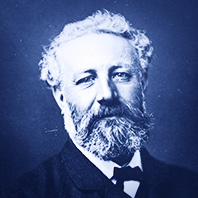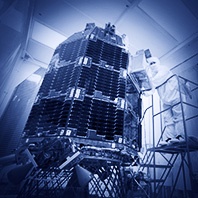Tag:
Science
Jellyfish are fascinating beings and although, nobody would actually like to come into contact with them, we are mesmerized by them and admire their shapes, colors and almost etheric bodies, which are floating through the water – like entities from another world. And lo behold, there is also one kind that the Moon lent his name to: the »moon jellyfish« (lat. aurelia aurita).
Also in various other languages, you can find the word »moon« in the name these jellyfish:
Read more
There are currently precisely six American flags on the Moon, which were left behind by the respective astronauts at the moon landings of the Apollo missions 11,12,14,15,16, and 17. The flag of the Apollo 11 mission led the way. On 21st July 1969 at 03:56 am (CET), Neil Armstrong was the first human to set foot onto our Moon and spoke the legendary sentence: »That’s one small step for (a) man … one … giant leap for mankind«. Together with his colleague Buzz Aldrin, he then planted the first flag on the Moon, which was apparently not so easy, due to the space suits, the pole rods and the condition of the ground.
Read more
Again and again it is spoken about the Moon in the night sky, and the visible size for us here from Earth and we would like to recall some details or outline and summarize them again:
The Sun and the Moon about the same size in the sky
The full moon in the sky appears to have almost the same size as the Sun by day, because the Sun is approx. 400 times as large as the Moon, but also 400 times further away. So it balances itself out and this is how these two very different sized orbs appear to be of the same magnitude to us.
Read more
It is fascinating how the French writer Jules Verne (1828–1905) envisaged the journey to the Moon 100 years in advance in his science fiction novels and was able to put it into words. Admittedly, he was quite taken with describing journeys to unimaginable places: from the deep sea (“20,000 Leagues Under the Sea”), via the circumnavigation of the Earth (“Around the World in 80 Days”) through to the interior of the Earth (“Journey to the Center of the Earth”). Of course, space had to be part of this and this is how Jules Verne firstly wrote the novel “From the Earth to the Moon” (»De la Terre à la Lune«, 1865) and then later the sequel “Around the Moon” (»Autour de la Lune«, 1870).
Read more
The lunar probe »LADEE« (short for: Lunar Atmosphere and Dust Environment Explorer) of the American space agency NASA, launched successfully into space, for further exploration of the Moon. A probe is an unmanned flying object, which can fly through space or circle orbs and thereby sends data to Earth via radio.
Read more
After we have already mentioned the lunate bone, one of the eight human carpal bones, which has been named after the Moon, due to its sickle shape, we would like to take another look at the human hand – this time at the fingernails. Lo and behold: here too, the name was inspired by the Moon. The white area of the nail, shaped like a half-moon is called »lunula« (lat. little moon) and incidentally, can be found on toenails as well. The lunula is differently pronounced with every human being, with some you may only see it on the thumb, with others you can see it on all fingers and toes.
Read more
There is actually a bone inside the human body, which is called »lunate bone«. Indeed, it may not belong to the most important of the 206 bones that a grown man carries around with him, but the name alone makes it remarkable. The lunate bone is one of the eight carpal bones, being the bones that connect the hand with the forearm. The lunate bone (lat.: os lunatum) was given his name because of its crescent shape.
Read more
A 3D Printer is a device with which you can print three-dimensional objects. This may initially sound strange, but will become obvious once you know that the objects can be built in layers. The printer applies the relevant materials instead of ink (i.e. plastic) and consequently forms the result.
Because these printers are now available for consumers at normal prices, in the future, we will purchase merely printing data instead of the product. So this trend actually moves away from mass-market productions and towards individualized items.
Read more
Looking at the Moon, you can recognise the spots on the surface with the naked eye, which are termed lunar maria and have always been inspiring people’s imagination. It is actually molten rock that rose to the surface during the origin of the Moon and then hardened. If looked at closer and using a telescope as an aid, you are able to make out mountains and valleys and a large amount of craters. In short: they are landscapes that give our Moon its face.
Read more
Especially, because many people report that they are a bit
»out of it« at the full moon, it seems natural to think that more accidents could happen during this time. There are several studies [*], which have carefully examined both, the full moon and also other moon phases with the continuous identical result: no recognisable correlation between the moon events and accidents.
Read more










